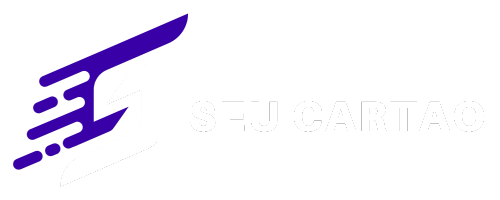In today’s financial landscape, interest rates play a crucial role in determining the returns on various banking products, from savings accounts and fixed deposits to loans and mortgages.
While interest rates may seem like small numbers on paper, they can have a significant impact on your financial health, whether you’re saving or borrowing. Knowing how to find and leverage the best interest rates available can make a major difference in building your wealth and optimizing your financial strategy.
In this article, we’ll explore how you can take advantage of the best interest rates on banking products to grow your savings, reduce borrowing costs, and make smarter financial decisions.
1. Understand the Types of Interest Rates
Before you start looking for the best rates, it’s important to understand the different types of interest rates you may encounter in banking products:
- Nominal Interest Rate: This is the percentage rate charged or earned on a principal amount, usually expressed annually. It doesn’t take into account the effect of compounding.
- Effective Interest Rate (EIR): This reflects the actual interest earned or paid after considering compounding over a given period. It gives you a more accurate picture of the real return on an investment or cost of a loan.
- Fixed vs. Variable Interest Rates: A fixed interest rate remains the same throughout the term of the loan or deposit, providing stability. A variable interest rate, on the other hand, can change over time, depending on the market conditions or a benchmark rate (such as the prime rate or LIBOR).
2. Compare Rates Across Different Banks and Financial Institutions
One of the easiest ways to find the best interest rates is to shop around. Different banks and financial institutions often offer different rates on the same types of products, and those rates can vary based on several factors, including the institution’s policies, your creditworthiness, and current market conditions.
- Use comparison websites: There are numerous online tools and websites that aggregate interest rate information from a wide range of banks, allowing you to easily compare rates on savings accounts, fixed deposits, loans, and mortgages. Websites like NerdWallet, Bankrate, or local comparison platforms can be very useful.
- Check promotional offers: Many banks offer promotional rates to attract new customers or deposits. These limited-time offers can provide higher interest rates for a specific period, such as six months or a year. Be mindful of the terms and conditions to understand when the promotional rate will expire and what the standard rate will be after that.
- Consider online banks: Online-only banks often have lower overhead costs and, as a result, tend to offer higher interest rates on savings accounts and CDs compared to traditional brick-and-mortar banks.
3. Leverage Compounding to Maximize Returns
When it comes to saving, compounding is one of the most powerful tools for growing your wealth. The more frequently interest is compounded, the faster your money will grow. Make sure to look for products that compound interest frequently.
- Daily or monthly compounding: Accounts that compound interest daily or monthly will generate more interest than those that compound quarterly or annually. This is because interest is being calculated and added to the principal more frequently, which leads to faster growth.
- Long-term deposits: For long-term savings goals, look for banking products with compounding terms that suit your needs. Long-term fixed deposits or certificates of deposit (CDs) typically provide better rates than short-term options, and you’ll benefit more from compounding over time.
- Reinvest your interest: For investment products, consider reinvesting the interest or dividends earned. This way, your interest is compounded, and you can earn returns not only on your initial investment but also on the interest you’ve already earned.
4. Opt for High-Yield Savings Accounts
High-yield savings accounts are a great option for earning higher interest on your savings without taking on significant risk. These accounts often offer interest rates much higher than traditional savings accounts.
- Look for the best rates: High-yield savings accounts can be found at online banks, credit unions, or even some traditional banks. Again, be sure to compare the rates across multiple institutions.
- Understand the terms: While high-yield savings accounts typically offer higher interest rates, they may come with certain conditions. Some may require a minimum balance to earn the highest rate, or you may be limited in the number of withdrawals you can make each month.
- Watch for fees: While interest rates are important, also be aware of any associated fees (e.g., monthly maintenance fees, minimum balance fees) that might eat into your returns.
5. Explore Fixed Deposits and Certificates of Deposit (CDs)
If you’re looking to earn a guaranteed return over a set period, consider fixed deposits (FDs) or certificates of deposit (CDs). These are time-bound savings products where you agree to lock your money for a specific duration, and in return, you receive a higher interest rate than a regular savings account.
- Compare terms and rates: Different terms (e.g., 6 months, 1 year, 5 years) come with different interest rates. Longer-term deposits typically offer higher rates, but make sure to choose a duration that aligns with your financial goals.
- Penalty for early withdrawal: Keep in mind that most FDs and CDs have a penalty if you withdraw your money before the maturity date. This can significantly reduce the amount of interest you earn.
- Laddering strategy: A laddering strategy involves investing in multiple CDs or FDs with different maturities. This allows you to access your funds periodically while still taking advantage of higher interest rates for the longer terms.
6. Pay Attention to Loan and Mortgage Interest Rates
If you’re borrowing money, whether for a mortgage, car loan, or personal loan, securing the lowest possible interest rate is key to minimizing the total cost of your debt. Here’s how you can benefit from the best loan rates:
- Improve your credit score: A higher credit score can often lead to lower interest rates on loans. Take steps to improve your credit score by paying down debt, avoiding late payments, and disputing any errors on your credit report.
- Compare rates for loans: Shop around and compare loan offers from different lenders. Look at the annual percentage rate (APR), which includes both the interest rate and any associated fees. This gives you a better understanding of the true cost of the loan.
- Consider fixed vs. variable rates: If you expect interest rates to rise, a fixed-rate loan might be a better option to lock in a low rate. However, if you believe rates will remain stable or decrease, a variable-rate loan could provide lower initial rates.
- Refinance existing loans: If interest rates drop or your credit score improves, refinancing your loan can help you secure a better rate. This can lower your monthly payments or shorten the loan term, saving you money over time.
7. Take Advantage of Special Programs and Offers
Many banks offer special programs or offers that can help you secure better rates on loans, savings accounts, and other banking products. These may include:
- Introductory offers: Some credit cards and savings accounts offer introductory interest rates that are higher than the standard rates. Be mindful of when the introductory period ends, and make sure you understand the terms.
- Loyalty benefits: Some banks offer better rates for long-term customers or for those who maintain a certain level of assets with the bank. Ask your bank if there are loyalty programs or perks that can benefit you.
- Government-backed savings programs: In some countries, there are government-backed savings programs, such as ISAs in the UK or 401(k) and IRAs in the U.S., that offer higher interest rates on retirement savings, tax advantages, or government guarantees.
8. Regularly Review Your Interest Rates
Interest rates are not static—they change over time due to factors such as market conditions, inflation, and central bank policies. To continue getting the best rates:
- Monitor interest rates: Keep track of interest rate changes and adjust your financial strategy accordingly. If you notice that rates have increased, consider moving your savings into a higher-yielding account or refinancing your loans.
- Refinance or switch accounts: Don’t hesitate to refinance loans or switch to a higher-yield savings account if it benefits you. Many banks may offer attractive rates for new customers, so it’s worth revisiting your banking options every year.
Conclusion
To make the most of your banking products, whether you’re saving or borrowing, it’s essential to take the time to compare interest rates across different institutions and products. By understanding the types of interest rates available, leveraging compounding, considering fixed deposits or CDs, and keeping an eye on special offers, you can maximize your returns and minimize your borrowing costs.
Staying informed and being proactive about managing your finances will allow you to take full advantage of the best interest rates available and help you make smarter financial decisions.
Let me know if you’d like more details on any of these points or need help finding the best rates for specific banking products!







